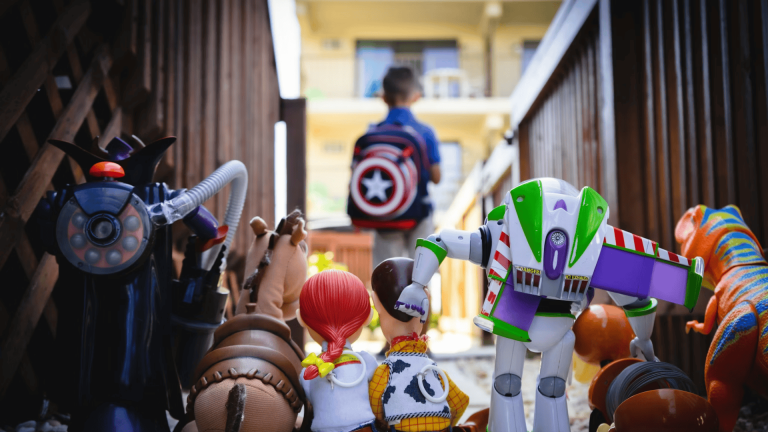Excessive Drooling in 1-Year-Old: Causes & Solutions

Is your little one’s shirt soaked before lunchtime?
Excessive drooling in one-year-olds can feel overwhelming for parents. One minute, everything is dry; the next minute, it looks like a small waterfall happened. This soggy situation is more common than you might think.
Many toddlers around their first birthday experience significant drooling phases. Their little mouths are busy places.
Teeth are pushing through the gums. Saliva production is ramping up. Meanwhile, swallowing skills continue to develop.
Sometimes, there are simple reasons behind all that drool. At other times, it may signal something that requires a pediatrician’s attention. The good news? Parents can usually tell the difference with a little guidance.
Let’s examine the causes of excessive drooling and determine when it’s time to take action.
Why Is My One-Year-Old Drooling So Much?
Around their first birthday, babies hit several developmental milestones that trigger extra drooling.
Their salivary glands are working overtime, producing more spit than ever before. At the same time, their swallowing coordination is still catching up.
Teething plays a huge role in this drooling drama. Those molars pushing through can cause serious discomfort and extra saliva production. The body’s natural response is to flood the mouth with soothing saliva.
This phase of excessive salivation is completely normal for most toddlers. Their little systems are simply learning to balance saliva production with swallowing ability.
It’s messy, but it’s also a sign of healthy development happening right on schedule.
Normal Causes of Drooling

Understanding why babies drool naturally can help ease parental concerns about this common phase. Most one-year-olds experience increased drooling as part of their normal growth and development.
1. Teething
New teeth pushing through tender gums trigger the body’s natural response to produce extra saliva. This additional moisture helps soothe irritated gum tissue and provides relief from teething discomfort.
The process can last several weeks as each tooth progresses through.
2. Mouth Probe
Babies learn about their world by putting everything in their mouths, which naturally increases saliva production. This oral inquiry is a crucial part of sensory development and learning.
The constant mouthing of toys, fingers, and objects stimulates the salivary glands. This exploratory phase is completely normal and shows healthy curiosity about their environment.
3. Increased Saliva Production
As babies grow, their salivary glands mature and produce more saliva than ever before. This increased production is a sign of healthy gland development and normal growth.
The body is preparing for more complex eating and speaking tasks ahead. This natural increase often outpaces a baby’s ability to manage all the extra moisture.
4. Inability to Swallow Properly
Young toddlers are still developing the motor control needed to swallow efficiently and regularly. The coordination between breathing, swallowing, and mouth closure takes time to perfect.
Many babies forget to swallow when they’re focused on other activities. This skill improves dramatically as their nervous system matures.
5. Comfort Seeking
Babies often drool more when they’re tired, hungry, or seeking emotional comfort from caregivers. Stress or overstimulation can trigger increased saliva production in sensitive little ones.
This type of drooling typically occurs alongside other comfort-seeking behaviors, such as thumb-sucking. Meeting their basic needs typically reduces this stress-related drooling.
Medical Causes of Drooling

Understanding these possibilities helps parents know when to seek medical advice. Early identification and intervention often lead to better outcomes for affected children.
6. Oral Motor Delays
Some children develop slower coordination in the muscles responsible for swallowing and mouth control. This delay makes it difficult to manage normal amounts of saliva effectively throughout the day.
The condition doesn’t necessarily indicate serious developmental problems but may benefit from therapy. Speech and occupational therapists can help improve these essential oral motor skills.
7. Gastroesophageal Reflux Disease (GERD)
When stomach acid backs up into the throat, it can irritate tissues and trigger excess saliva production. The body produces extra spit to help neutralize the harsh stomach acids.
This condition often comes with other symptoms like frequent spitting up or fussiness after eating. Proper treatment of GERD typically reduces the associated excessive drooling.
8. Neurological Disorders
Conditions affecting the nervous system can impact muscle control and coordination needed for proper swallowing. Cerebral palsy and other neurological conditions may cause persistent drooling throughout childhood.
These disorders require comprehensive medical management and often benefit from multidisciplinary care teams.
9. Infections
Respiratory infections, throat issues, or other illnesses can temporarily increase saliva production in toddlers. Swollen glands or sore throats make swallowing uncomfortable, leading to more drooling than usual.
Excessive drooling of this type typically resolves once the underlying infection is treated. Fever and other symptoms of illness often accompany infection-related drooling.
10. Teething Infections
Ear infections or severe gum infections related to teething can worsen normal teething drooling.
These secondary infections can cause additional discomfort and may lead to increased saliva production beyond typical teething levels. Treating the infection typically brings drooling back to normal teething levels.
How Can You Help Manage Your Baby’s Drooling?

Managing excessive drooling doesn’t have to be overwhelming for parents. Simple strategies can keep your little one more comfortable and reduce the mess.
Most techniques are easy to implement and use items you probably already have at home.
| Tip | Description | Why It’s Helpful |
|---|---|---|
| Wipe the Chin Regularly | Gently wipe your baby’s chin to keep their skin dry and prevent rashes. | Prevents skin irritation and discomfort from drool buildup. |
| Use Drool Bibs | Place drool bibs around your baby’s neck to catch excess drool and keep clothes dry. | Keeps clothes clean and minimizes mess. |
| Teething Relief | Use teething rings or chilled teethers to soothe sore gums. | Eases teething discomfort and reduces drooling. |
| Massage the Gums | Gently massage your baby’s gums with your finger to ease teething pain. | Reduces drooling caused by teething and provides relief. |
| Hydration | Ensure your baby stays hydrated by offering water or milk regularly. | Helps reduce excessive drooling and ensures hydration. |
These practical tips can make daily life easier for both you and your baby. Remember that most drooling phases are temporary and will improve with time.
When to See a Doctor About Your Baby’s Drooling?

Most parents can handle normal drooling at home, but certain signs warrant a pediatrician’s attention.
If your one-year-old suddenly starts drooling much more than usual, it’s worth a check-up.
Watch for drooling that accompanies fever, difficulty swallowing, or refusal to eat. These symptoms might indicate an infection or other medical issue.
Other red flags include drooling, which seems to interfere with sleep or eating. If your toddler is gagging frequently or seems uncomfortable beyond normal teething fussiness, don’t hesitate to call your doctor.
Persistent drooling that persists well beyond the typical teething phase may also require professional evaluation.
Conclusion
Excessive drooling in one-year-olds is typically a regular part of development. Understanding the difference between normal and drooling helps parents feel more confident.
While teething and developmental changes cause most drooling, trust your instincts. When unsure, your pediatrician is the best guide.
Remember that every child develops at their own pace. Some babies drool more than others, and that’s perfectly normal.
With patience and the right management strategies, you can help your little one stay comfortable during this messy but temporary phase.
We’d love to hear from you! Drop a comment below and share the tried-and-true home remedies your grandparents or great-grandparents used for excessive drooling.
Sometimes the old-fashioned approaches work wonders – let’s learn from each other’s family wisdom!






